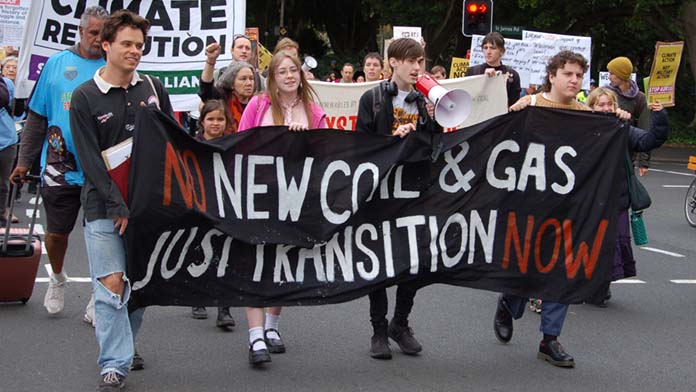The NSW Labor government is set to lock in more pollution through extending the life of Eraring, the country’s largest coal-fired power station. This is all because the government can’t see the urgency of action on climate change.
The move comes as January 2024 was confirmed as the world’s hottest month on record.
The year since February 2023 was the first 12-month period to breach the safe warming limit of 1.5 degrees, nominated in the Paris Agreement on climate action.
Between $200 and $400 million of public money a year will likely be spent to keep Eraring running.
Its closure on schedule is needed to meet the NSW government’s own climate targets of 70 per cent emissions reduction by 2035—which were legislated only in November.
As the Climate Council’s Dr Jennifer Reyner has said, “Shutting Eraring on time is critical to tackling the climate crisis. The science is clear—there’s no room for coal station extensions.”
An announcement is imminent, with the ageing power plant scheduled to close in August next year and its owner Origin requesting 18 months’ notice to keep it open.
The NSW government says there is a danger of an energy shortfall and blackouts when Eraring closes.
But as energy analysts Tim Buckley and Annemarie Jonson explain, an Australian Energy Market Operator (AEMO) report handed to NSW Climate and Energy Minister Penny Sharpe in October shows that, “Once federal and state capacity schemes are included, there is no NSW electricity supply reliability gap forecast in any year out to 2033, notwithstanding the on-time shutdown of Eraring next year.”
Ample wind, solar and battery storage projects are on track for completion to meet the deadline, they say. Renewable energy already made up 31.3 per cent of NSW’s energy supply last year.
Any problems would only be the result of a delay in construction of new expected energy projects. If this looks like happening the hundreds of millions needed to keep Eraring open should be set aside to speed up renewable energy developments.
There are also plenty of other measures that would reduce power demand and eliminate any danger of a shortfall—and are a far better use of government money.
In January the NSW and federal governments announced a combined $206 million over four years to fit 24,000 social housing units with solar panels, heat pumps, reverse-cycle air-conditioners and insulation. This will cut power bills and reduce energy use.
With 125,000 social housing units alone in NSW there is far more that could be done.
Demand management measures such as NSW’s Peak Demand Reduction Scheme can also be expanded to encourage more household and industrial users to reduce energy consumption during times of high demand.
More new coal and gas
The fossil fuel expansion is still charging ahead across the country. In January the NSW government approved an expansion of the Boggabri coal mine, extending its life until 2036. It will produce another 63 million tonnes of greenhouse gases.
And in early February the Queensland government gave the go-ahead for a new coal mine in the Bowen Basin, Whitehaven Coal’s Winchester South coal mine.
The company plans to extract 17 million tonnes of thermal and metallurgical coal at the site every year for the next 28 years. The mine is regarded as the largest new coal mine planned nationwide and will spew out 583 million tonnes of emissions over its lifetime.
It still requires federal government approval to proceed.
The federal Labor government has also re-iterated its support for the massive expansion of gas mining and export planned, including projects off Darwin and WA.
At the end of January Resources Minister Madeleine King flew to Japan and South Korea to make it clear the government was fully behind the ongoing expansion of the gas industry.
The countries are the second and third largest export markets for Australian mining and energy companies, with $99 billion of coal and gas heading to Japan last financial year and $47.5 billion of coal, gas and iron ore sold to South Korea.
“Australia will remain a reliable supplier of [gas] for Japan well into the future,” she declared.
“This includes ensuring that we bring new LNG projects to fruition—such as the Barossa LNG project and the Scarborough LNG project.”
While King has labelled it “radical extremism” to oppose new gas developments, the mainstream International Energy Agency warned back in 2021 that there can be no new coal, oil and gas developments to reach net zero by 2050.
Labor governments state and federal are still ignoring the gravity of the climate emergency we face. The climate movement has to keep demanding an end to new coal and gas projects and urgent action to curb emissions.
By James Supple






